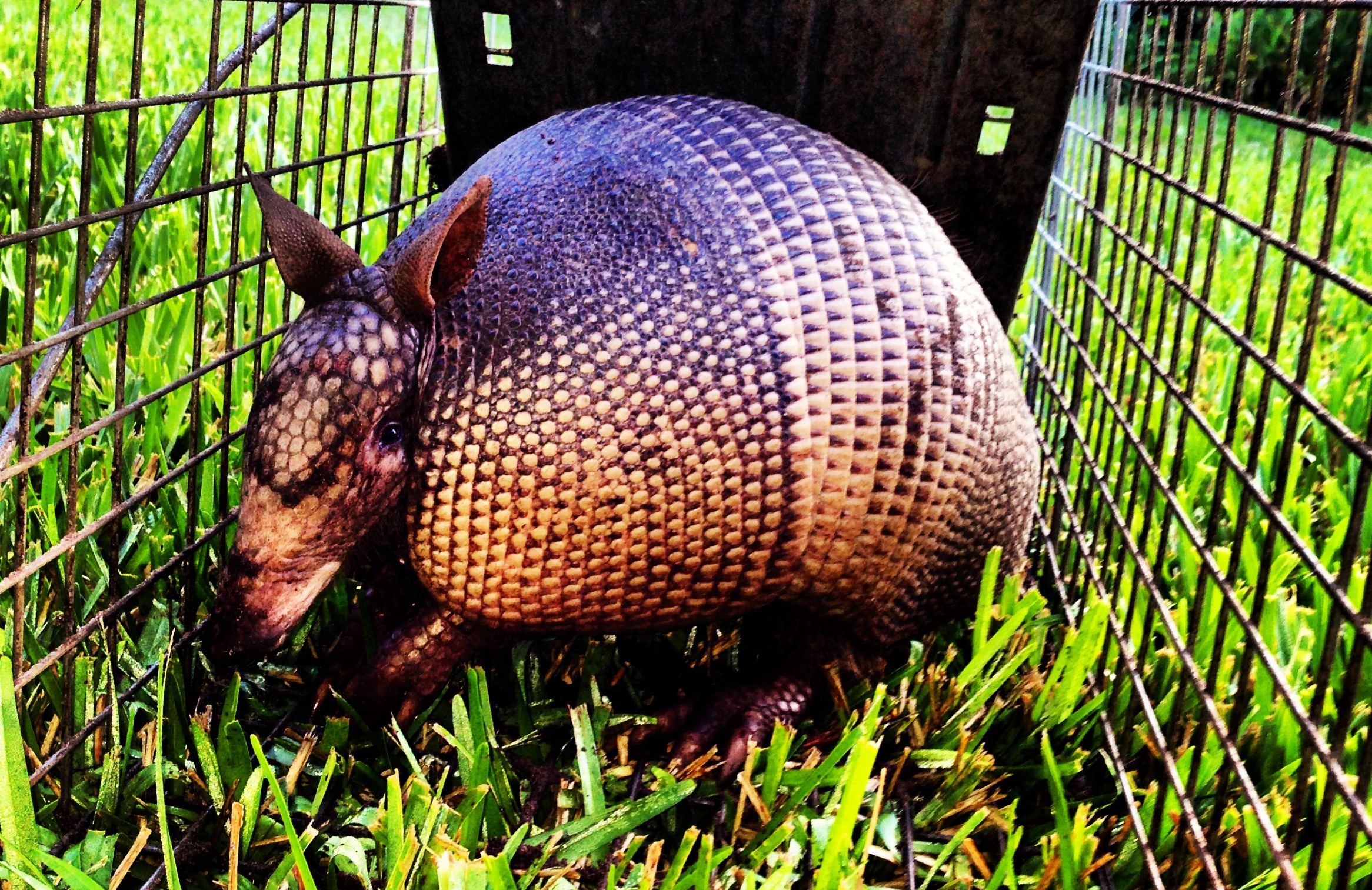
Call Now For Help With Armadillos
Nuisance Armadillo Concerns
The Nine-Banded Armadillo
The nine-banded armadillo is a nocturnal and insectivorous mammal, native to Central and South America. It forms part of the Dasypodidae family, one of only two surviving families in the order Cingulata.
The word “armadillo” is derived from the Spanish term “little-armored one”, which refers to the bony shell-like plates covering their body. Nine-banded armadillos are roughly the size of a house cat, weighing anything from 11 to 14 pounds, and vary in color, from gray to a brown-black.
Armadillo Removal Service Areas
- Sugar Land TX Armadillo Removal Services
- Katy TX Armadillo Control Services
- Galveston TX Armadillo Removal Company
- League City TX Armadillo Control Company
- Pearland TX Armadillo Removal Services
- Missouri City TX Armadillo Control Services
- Friendswood TX Armadillo Removal Company
Habitat
The nine-banded armadillo’s habitat can usually be found near water sources including streams and water holes; it has even been known to have more than one burrow. This armadillo thrives in areas with soft soil that it can burrow into, and can be located in bottomland hardwood forests (or river swamps), scrub and areas covered with brush growth.
Anatomy And Life Cycle
Like other xenarthrans, nine-banded armadillos have low body temperatures of ±93 F. In addition, with so little fur, it is especially sensitive to temperature. However, the nine-banded armadillo has adapted its behavior according to the weather of different seasons, so that it is more active during the warmer part of the day. Even so, if temperatures drop too low, the armadillo will not survive.
The nine-banded armadillo’s mating season takes place during two to three months during the summer. However, the embryo is only implanted
until 14 weeks after mating. About four months after the embryo is implanted, the female gives birth – almost always to four identical quadruplets, all of the same sex.
The young are able to start walking only a few hours after birth and are born with their eyes open. At birth, the exterior of the offspring is still soft – only to start hardening as they get older. This leaves them extremely vulnerable to predators. The hard armor’ helps to protect these animals from predators like wolves, black bears, cougars, and alligators.
Nine-banded armadillos stay with their mother, living off her milk for three months after being born. They then leave the burrow and start to forage with the mother, usually up until the age of six months to one year.
The lifespan of the nine-banded armadillo varies greatly, depending on its location and circumstances. They can live for anything from seven to fifteen years long – although there have been cases where they lived to the age of 23.
Diet
The nine-banded armadillo is normally an insectivore, gathering their food by burrowing through leaf litter and loose soil with their snouts. They have a particularly long tongue, which is also tacky, that serves as a tool to grab ants, termites, and worms. The animals have been known to roll around on ant hills in order to extricate and consume the ants. They also have peg-like teeth that are functional for grinding their food but does not serve as a tool to capture prey.
Besides insects, nine-banded armadillos also prey on small reptiles, amphibians, and even carrion. Although carrion is eaten, it is likely that the armadillo is more attracted to the maggots borne by carcasses rather than the meat itself.
Behavior
Nine-banded armadillos favor the solitary life, separating their terrain from others by way of urine, feces, as well as other excretions from scent glands located across their body. It is normally the males who tend to become aggressive – by way of kicking and chasing – when attempting to fend off other males in an effort to increase their likelihood of coupling with a female.
Many think that nine-banded armadillos curl themselves into a ball when feeling threatened, although this is not the case. In some
instances, when frightened, it will jump up into the air before running away. This behavior is what causes them to be hit by cars at certain times, leaping up into an oncoming car’s undercarriage.
Hunting and conservation
These animals reach sexual maturity at the age of one year and can reproduce once a year for the rest of lives. This high reproductive rate has contributed in great part to the species’ expansion over past years.
Even though populations are increasing, nine-banded armadillos are at times poisoned, shot, or trapped by people that consider them
pests. Some are eaten or used for the curio trade.
During the Great Depression, the animals were hunted and eaten in Texas, where it was known as poor man’s pork, or the “Hoover hog” – named so by those who considered President Herbert Hoover to be responsible for the Depression.

